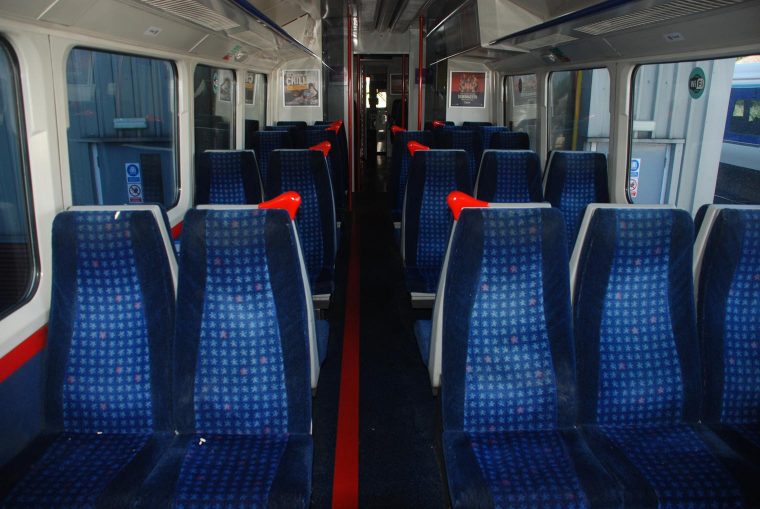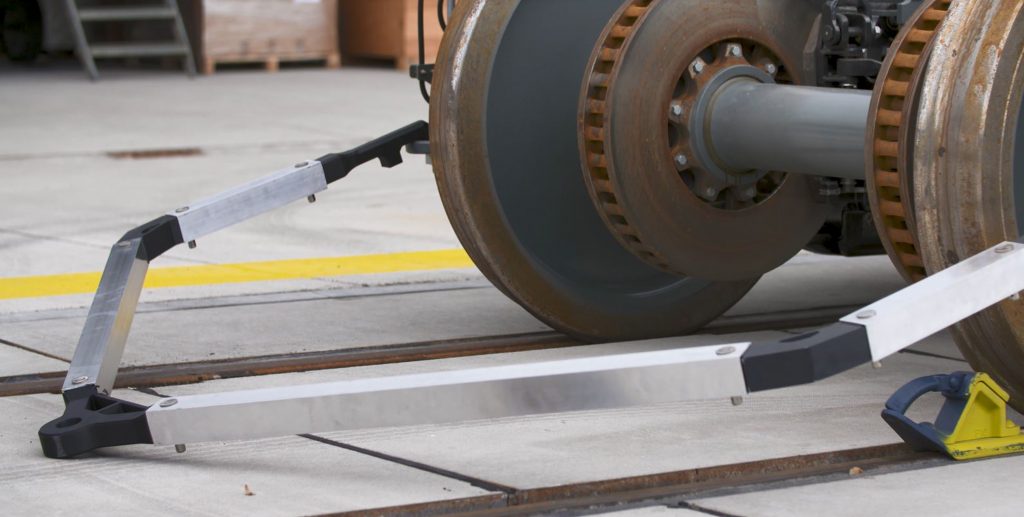The railway industry is one of the more exciting fields to watch the adoption of additive manufacturing, as various companies begin deploying the technology for use in the production of on-demand spare parts. One of the leaders in this trend has been Siemens Mobility Services, which already worked with Stratasys to print maintenance parts for the German and UK rail industries. Now, the German multinational is expanding its rail maintenance operations to Russia.
Siemens has bought two Stratasys Fortus 450mc systems to produce spare parts for its Russian business, just as Siemens Mobility has been awarded a contract to build 13 high-speed Velaro trains for RZD, a Russian train company. Siemens will not only construct the vehicles but maintain and service them over the next 30 years. The contract is third Velaro order from RZD, which already has a fleet of 16 trains in its high speed rail (HSR) line, Sapsan, which runs from Saint Petersburg to Moscow.
Siemens has already installed the two new Fortus systems in its Siemens Mobility Russia locations in St. Petersburg and Moscow. There, the 3D printers will be used to execute the German multinational’s Easy Sparovation Part network in Russia, in which 3D print parts from digital inventory allow for in-house production of spare parts. With the new train contract, this means that Siemens will be servicing 16 existing trains and an additional 13 over the next 30 years using AM technology.
According to the conglomerate, the use of 3D printing has allowed Siemens Mobility Russia to exhibit a fleet availability record of over 99 percent.
“These availability figures would be physically impossible to achieve through external part sourcing and traditional manufacturing techniques alone, but Stratasys’ FDM 3D printers gives us the capability to cost-effectively produce the parts in-house, partially eliminating the need for warehousing or tools for a selected range of items,” said Alexey Fedoseev, Head of Customer Services, Siemens Mobility Russia. “We have already seen the success of the Siemens Mobility ‘Easy Sparovation Part’ business in Germany, where this technology has provided us time-per-part savings of up to 95% compared to traditional manufacturing methods.”
As long as the technology used to make the parts is up to the task, digital inventory has numerous benefits over physical storage. It reduces the space needed to maintain a physical supply, while also making it possible to deliver replacement parts on-demand, on-site, and quickly, regardless of the age of the equipment being maintained. In the case of a train car 30 years from now, the physical parts may not even exist any longer; however, the use of a digital inventory renders the concept of obsolete parts obsolete.

Grab handles 3D printed with Stratasys technology and installed on a Chiltern Railways train. Image courtesy of Stratasys.
“The manufacture and delivery of an additional 13 new Velaro trains will see us work on multiple vehicles over a long period of time, and within very strict time constraints. As a result, 3D printing makes for a perfect add-on to aid our production and provides us with the flexibility to replace and create parts ourselves, anytime they are needed,” Fedoseev said.
The Fortus 450mc systems have the ability to 3D print using industrial-grade materials that can operate in the extreme temperatures that Russia is known for. Stratasys also offers materials that meet the regulatory certifications necessary for 3D printing interior cabin parts.
According to Grand View Research, the global railroads market was valued at $508.5 billion in 2016 and is expected to hit 829.3 billion by 2025. Growth is due in part to the continued industrialization of countries like India and China, as well as the global electrification of transportation infrastructure in the face of the climate crisis.
While the U.S. has been continually thwarted in its attempts to establish any real HSR lines, China’s HSR system has become the most extensive on the planet. With that in mind, there is little doubt that the U.S. will eventually establish some HSR as it reduces its dependency on fossil fuels. Whether or not it will be able to do so before our ecosystem is beyond repair is another story.

In order of most to least high-speed rail lines: China, Europe, Russia, the U.S. The U.S. has two small corridors from Boston to Washington D.C. and D.C. to Perryville, Maryland that are classified as HSR. Images courtesy of Wikipedia.
As HSR grows, so too will rail maintenance. Within that market, the railway maintenance machinery segment was valued at $4.24 million in 2018 and is expected to reach $7.44 million by 2025, based on research from 360marketupdates.com. It’s highly likely that this subsegment will feature AM.
This is not just because of Siemens’ use of the technology in the space, such as the aforementioned maintenance programs in Germany and the U.K., but Deutsche Bahn is a part of a larger Mobility goes Additive network dedicated to the use of AM in rail and other industrial sectors. Dutch Railway is also using 3D printing for the production of spare parts.
In other words, not only is the railway industry growing, but so is 3D printing spare parts for trains, which will naturally segue into producing end parts. This is indicated by a recent announcement by a 2018 Wabtec. GE Transportation merged with industrial train part manufacturer Wabtec in 2018, which then bought GE’s H2 metal binder jetting system with the plan to use it in the production of up to 250 components by 2025. At that point, Wabtec won’t be the only company 3D printing end parts for the railway industry. Manufacturers globally will be saying it’s “all aboard” for additive.
The post Siemens Mobility Extends Spare Parts 3D Printing Program to Russia’s High-Speed Rail appeared first on 3DPrint.com | The Voice of 3D Printing / Additive Manufacturing.


22 Replies to “Siemens Mobility Extends Spare Parts 3D Printing Program to Russia’s High-Speed Rail”
Comments are closed.